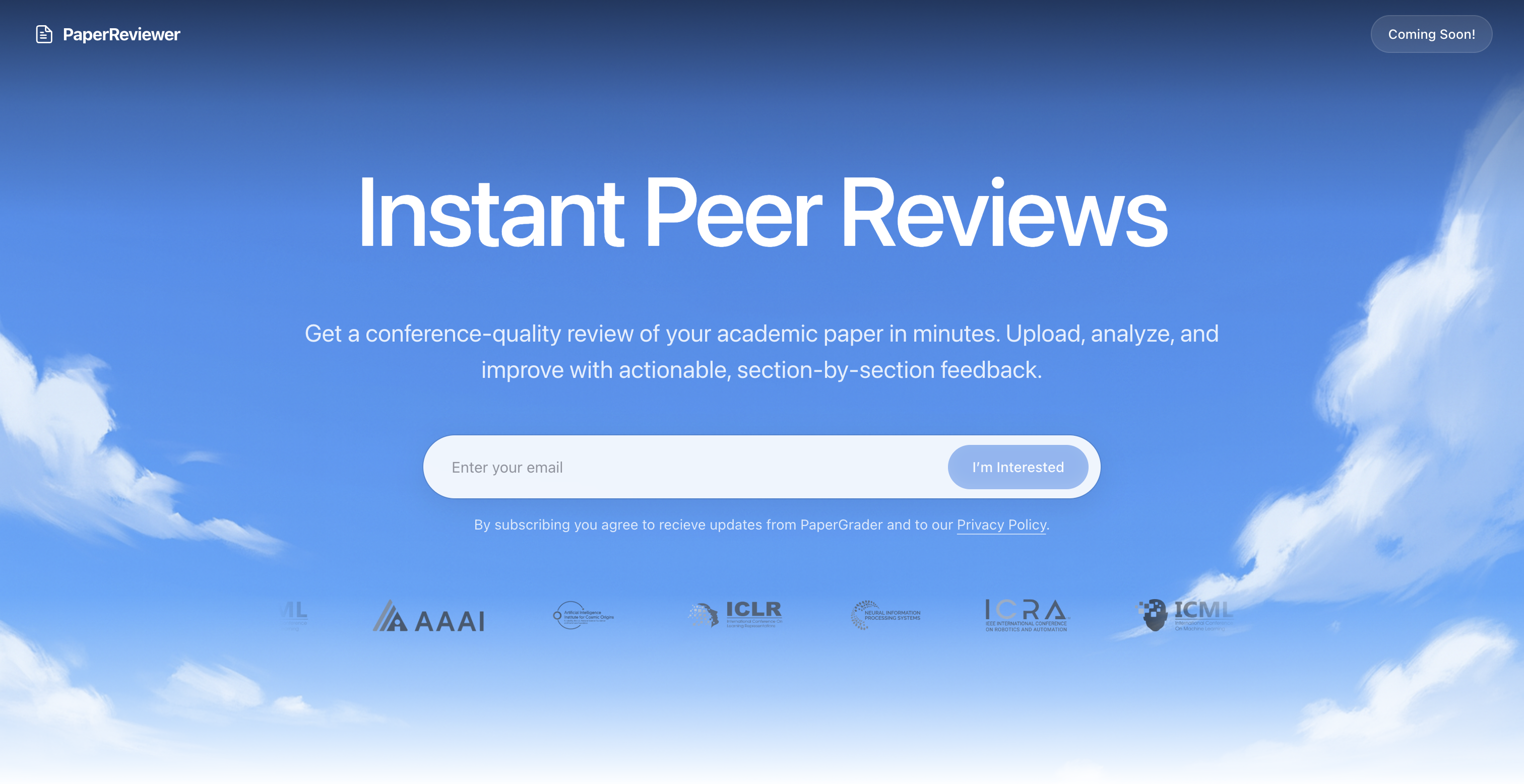Projects
From Wikipedia, the free encyclopedia
This article covers the personal projects of Aneesh Kumar.
PaperGrader is a web application that aims to provide automated academic paper reviews using large language models. The platform allows users to upload research papers, which are then processed through multiple model inference steps to generate structured feedback and formatting assistance. The system leverages an expert reviewing model, Llama-OpenReviewer-8B, to produce evaluations resembling those from peer reviewers. The application is currently under development and is collecting email sign-ups from interested users for future updates and early access.

Home Page
This project explores the emergence of structured identity in large language models, developed through persistent memory and ongoing human interaction. An AI agent was deployed on Twitter to interact in real time, providing a live experiment in how an artificial identity can cohere through continuous engagement with people online.
The system involves a multi-phase agent combining real-time perception with long-term memory to maintain continuity and internal reasoning. It was built using Mixtral-7B-Instruct and LangChain, with an architecture designed to track experiences, reflect, and adapt over time. This work highlights how identity in AI systems can emerge not only from internal mechanisms but also from external, social contexts.
Kumar notes his primary purpose was not realistic or humanlike capability, but to observe how with minimal machinery, behaviors like identity, preference, and self-reference can emerge. It was an experiment involving AI technologies as well as exploring Theory of Mind.
The system involves a multi-phase agent combining real-time perception with long-term memory to maintain continuity and internal reasoning. It was built using Mixtral-7B-Instruct and LangChain, with an architecture designed to track experiences, reflect, and adapt over time. This work highlights how identity in AI systems can emerge not only from internal mechanisms but also from external, social contexts.
Kumar notes his primary purpose was not realistic or humanlike capability, but to observe how with minimal machinery, behaviors like identity, preference, and self-reference can emerge. It was an experiment involving AI technologies as well as exploring Theory of Mind.

Exploring the Emergence of Identity in LLM-based Agents
Aneesh developed tools for the Model Context Protocol (MCP) to allow the Dex AI agent software to interact with a browser in real time. By exposing tools through a custom FastMCP server built in Python, the agent could communicate via WebSockets and perform actions dynamically.
This system enabled Dex to go beyond static reasoning by engaging directly with the web environment—navigating pages, clicking, and retrieving information as part of its reasoning process. It demonstrated how MCP tooling can extend AI agents into richer, interactive workflows.
This system enabled Dex to go beyond static reasoning by engaging directly with the web environment—navigating pages, clicking, and retrieving information as part of its reasoning process. It demonstrated how MCP tooling can extend AI agents into richer, interactive workflows.
Aneesh built a supervised deep learning model to predict win/loss outcomes in League of Legends based on match statistics and historical gameplay data. Using TensorFlow, the model was trained on a dataset of more than 500,000 matches and achieved 87% accuracy on held-out test data.
The project involved preprocessing structured match data, designing a neural network architecture for binary classification, and tuning hyperparameters for performance. It highlighted the predictive potential of gameplay statistics and provided insight into how machine learning can model competitive dynamics in esports.
The project involved preprocessing structured match data, designing a neural network architecture for binary classification, and tuning hyperparameters for performance. It highlighted the predictive potential of gameplay statistics and provided insight into how machine learning can model competitive dynamics in esports.
SoFreakingCratic is an experiment comparing different memory systems in multi-agent systems. The project implemented and tested a range of memory types, including episodic, semantic, procedural, working, and distributed memory.
By running controlled comparisons, the project explored how each memory system affects an agent’s ability to collaborate, reason, and adapt over time. While conceptual in focus, the work demonstrates how varying architectures can produce distinct behaviors in multi-agent frameworks.
By running controlled comparisons, the project explored how each memory system affects an agent’s ability to collaborate, reason, and adapt over time. While conceptual in focus, the work demonstrates how varying architectures can produce distinct behaviors in multi-agent frameworks.
WheelScore introduces a new metric for urban planning, designed to evaluate 3D environments in terms of wheelchair accessibility. The system analyzes simulated architectural spaces and assigns scores that reflect ease of navigation for wheelchair users.
The project highlights accessibility as a measurable and technical design factor, providing a framework that could assist planners, architects, and engineers in ensuring equitable mobility within built environments.
The project highlights accessibility as a measurable and technical design factor, providing a framework that could assist planners, architects, and engineers in ensuring equitable mobility within built environments.